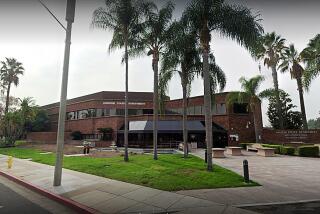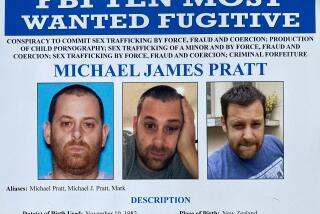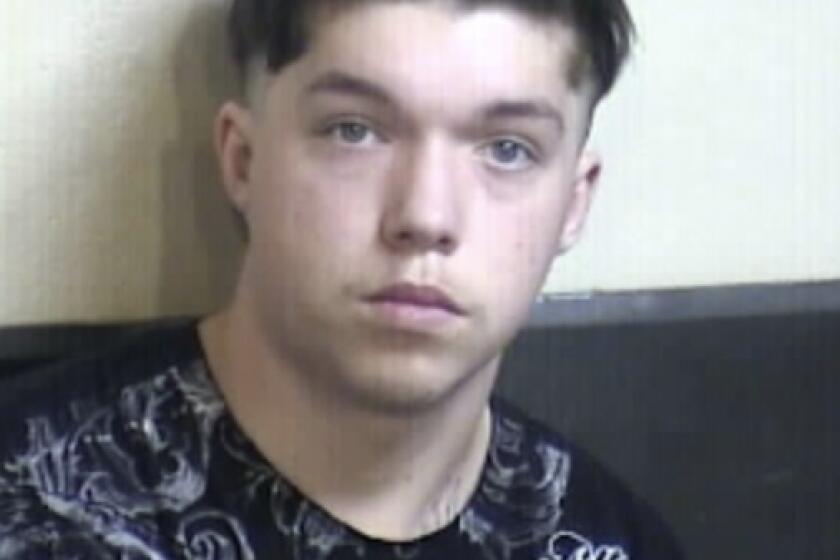Orange County targets customers in fight against human trafficking
A 24-year-old Anaheim man accused of teaching a teenage girl to work as a prostitute, advertising her services on an X-rated website.
A 19-year-old guy charged with forcing a stable of girls to walk Beach Boulevard, not far from Disneyland, and perform sex acts for money.
A middle-aged Irvine woman accused of operating a brothel in an upscale apartment complex.
Since tougher human-trafficking laws went on the books in January, officials across California have sharpened their focus, going after pimps who force women — often young runaways or girls lured by Internet postings — to sell their bodies.
Orange County prosecutors are targeting their customers as well.
The names of men picked up on suspicion of soliciting sex have been publicized on the district attorney’s website, along with detailed descriptions of alleged pimps’ arrests, and stories of women being beaten, raped and virtually enslaved as prostitutes.
When he announced the get-tough approach at a rally earlier this year, Dist. Atty. Tony Rackauckas likened pimps to “modern-day slave owner[s]” and said customers were contributing to a lucrative criminal enterprise.
“At the very least, their partners and wives ought to know these sex purchasers are possibly endangering their health,” Rackauckas said.
The enforcement push was in response to the November passage of Proposition 35. An attempt to fight sex trafficking, it significantly increased sentences, allowing judges to hand out life sentences to those convicted of forcing minors into prostitution. Those convicted also must register as sex offenders for life.
Since early November, county prosecutors have filed charges against nine alleged human-traffickers. In addition, 402 alleged prostitutes and sex purchasers have been charged.
Whereas Orange County is “really trying to get the news out … about what they’re doing on human trafficking, other departments are still in the planning stages” of what to do, said Daphne Phung, an activist who led the charge for Proposition 35.
Some who work to combat human trafficking, however, take issue with naming johns.
“Shaming people never changes their behavior; it just pushes it further underground,” said Nola Brantley, executive director of MISSSEY, a community-based organization in Oakland that helps underage victims of sex trafficking.
According to experts, many prostitutes get their start between ages 12 and 15, having come from troubled homes or grown up in foster care. And although it is not unheard of for a young girl to be abducted and forced to sell herself out of fear for her life, the reality is often more complicated.
Pimps often take on the role of “Romeo” — acting like a girl’s boyfriend, telling her he loves her, promising to take care of her, said Susan Kang Schroeder, chief of staff at the Orange County D.A.’s office.
“Every aspect of these children’s lives is controlled by the pimps,” she said. “It’s astonishing that in this day, we still have slavery.”
And getting victims off the streets isn’t just a matter of rescuing them once from a trafficker.
“In the past, we would just arrest girls for prostitution violations. We would bring them into our jail and issue them a citation and then send them right back out to the street,” said Anaheim police Sgt. Craig Friesen. “We were part of a vicious cycle.”
With the passage of Proposition 35, prosecutors saw a chance to accelerate their efforts by creating a Human Exploitation and Trafficking unit, modeling it after one in Alameda County. The team, which includes an investigator and prosecutors, focuses exclusively on human trafficking cases.
“Orange County is giving a clear message that not only are we not taking this from traffickers — but we’re not taking it from the buyers either. I love that,” said D’Lita Miller, whose teenage daughter was a victim of sex trafficking and who works to help educate law enforcement about Proposition 35.
U.S. Rep. Ed Royce, (R-Fullerton), an advocate for human-trafficking victims, said more resources now are going to help girls drawn into prostitution, such as fining offenders to fund social services for the girls.
Outing johns, Friesen said, is “a way to show the community: ‘Look, these [young women] are people. This is the face of prostitution in our community.’ ”
More to Read
Sign up for Essential California
The most important California stories and recommendations in your inbox every morning.
You may occasionally receive promotional content from the Los Angeles Times.








